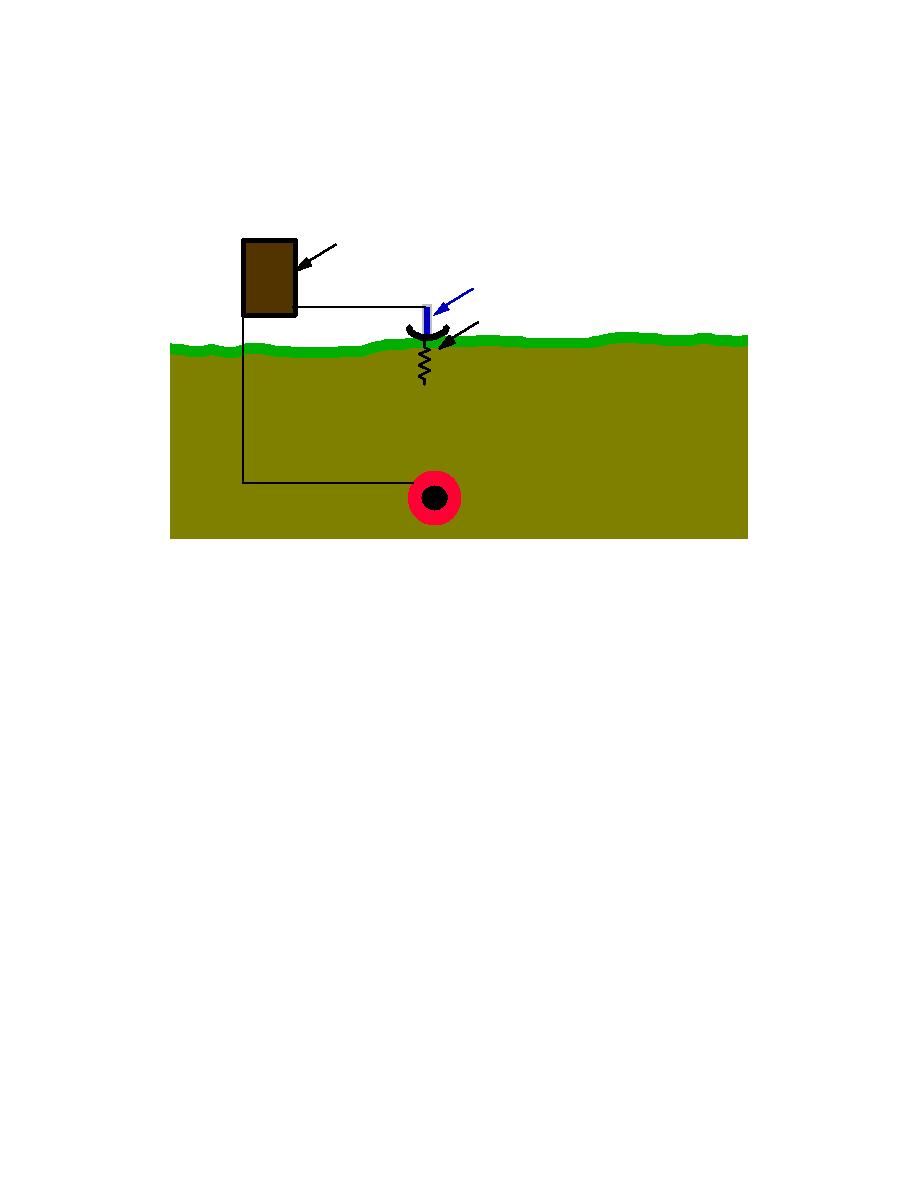
UFC 3-570-06
JANUARY 31 2003
Figure 7-4. Contact Resistance Error
V OL T M E T E R
L OW I NT E R N AL R E S IS T AN C E
V
R E FE R EN C E E L E CT R OD E
HI GH E XT E R NA L R E SIST A N CE
(+ )
(-)
7-2.5
Mixed Potential Error. Error results when a potential measurement being
taken on the structure is mixed with the potential of other structures also connected to
the circuit being tested. This error can be significant when the coating on the structure
being tested is very good and there are other structures in the area not isolated from the
cathodic protection system. This error is present when the system being tested is not
isolated, and is greater when the condition of the coating is better, the distance to the
nearest holiday is greater, the distance of the half cell to the other structure is shorter,
when the coating of the other structure is worse (or bare), and when the native potential
of the other metal is less negative (more cathodic, such as copper). This error is usually
in the positive direction (for example, you may measure -0.85 volts DC, and after
correction for the error you may actually have -0.95 volts DC). This error can be in the
negative direction if caused by contact with a more negative (more anodic) metal, such
as aluminum, zinc (galvanized steel), magnesium, or some stainless steels in the
passive state.
Another source of a more positive mixed potential could be a small anodic
area on the structure being tested, with larger cathodic areas on the same structure
influencing the potential measurement. This error is greater when the size of the more
positive area is smaller, the distance of the reference electrode to the structure is
greater, and when the size of the more negative area is greater.
7-6



 Previous Page
Previous Page
